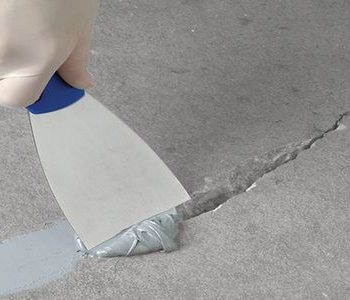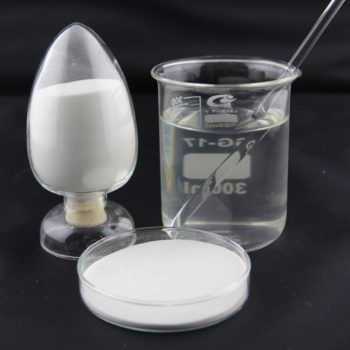Effect of cellulose ether on tile adhesive
1. Introduction
Cement based tile adhesive is the largest application of current special dry mortar. This is a mixture of organic or inorganic admixtures such as cement as the main cementitious material. And supplemented with grading aggregates, water retaining agents, early strength agents, and latex powders.
It usually only needs to be mixed with water when used, and the bond strength between the facing material .And the substrate can be greatly improved compared with ordinary cement mortar. It has good anti-slip property and has excellent water resistance, heat resistance and freeze-thaw resistance.
That is mainly used to paste decorative materials such as interior and exterior wall tiles and floor tiles. It is widely used in the decoration of interior and exterior walls, floors, bathrooms, kitchens and other buildings. It is currently the most widely used tile bonding material.
Usually we judge the performance of a tile adhesive. In addition to paying attention to its operational performance and anti-slipping ability, it will also pay attention to its mechanical strength and opening time.
In addition to affecting the rheological properties of ceramic glue, cellulose ethers in tile adhesives. For example, the operation of the sliding performance, the state of the sticking knife, and the like. It also has a large impact on the mechanical properties of tile adhesives.
2.the impact of tile adhesive opening time
When the rubber powder and the cellulose ether are co-present in the wet mortar. The rubber powder has kinetic energy that is more strongly attach to the cement hydration product. Cellulose ether is more present in the interstitial fluid, which more affects the viscosity and setting time of the mortar.
The surface tension of the cellulose ether is greater than the surface tension of the rubber powder and enriches more cellulose ether at the mortar interface. It facilitates the formation of hydrogen bonds between the base surface and the cellulose ether.
In the wet mortar, the water in the mortar evaporates. The cellulose ether is enrich on the surface and a film is forme on the surface of the mortar within 5 minutes, which reduces the subsequent evaporation rate.
As more water migrates from the thicker portion of the mortar to the thinner portion of the mortar layer, the film opening fraction formed initially dissolves. The migration of water will bring more cellulose ether to the surface of the mortar.
Thus, the film formation of cellulose ether on the surface of the mortar has a great influence on the performance of the mortar:
1) The formed film is too thin .And will be dissolve twice, which cannot limit the evaporation of water and reduce the strength.
2) The formed film is too thick, and the concentration of the cellulose ether in the mortar interstitial fluid is high and the viscosity is large. It is not easy to break the film of the surface when the tile is past.
From this, it is understood that the film formability of the cellulose ether greatly affects the opening time. The type of cellulose ether (HPMC, HEMC, MC, etc.), and the degree of etherification (degree of substitution) directly affect the film forming properties of the cellulose ether and the hardness and toughness of the film.
3. the impact on the pull strength
First
In addition to imparting various beneficial properties to the mortar described above. The cellulose ether retards the hydration kinetics of the cement. This retardation is mainly due to the adsorption of cellulose ether molecules on various mineral phases in the hydrated cement system.
However, in general, it is consistent that cellulose ether molecules are mainly adsorb on hydration products such as C-S-H and calcium hydroxide, and are rarely adsorb on the original mineral phase of clinker.
In addition, due to the increase in viscosity of the pore solution, the cellulose ether reduces the activity of ions (Ca2+, SO42-, …) in the pore solution, thereby further delaying the hydration process.
Viscosity is another important parameter that represents the chemical properties of cellulose ethers. As mentioned above, viscosity primarily affects water retention capacity. It also has a significant impact on the workability of the fresh mortar.
second
However, experimental studies have found the viscosity of cellulose ethers. Almost no effect on the hydration kinetics of the cement.The molecular weight has little effect on hydration, and the biggest difference between different molecular weights is only 10 min. Therefore, molecular weight is not a key parameter for controlling cement hydration.
Our system experiments also found that the content of the substituents plays an important role in the mechanical strength of the tile adhesive. We evaluated the performance of tile adhesives, which differ in the degree of HPMC. Different cellulose ether groups were test. The effect on the mechanical properties of tile adhesive under different esterification conditions.
Cellulose ethers, especially modified HPMC, are essential additives in many dry mix applications. The most important property of cellulose ethers is their water retention in mineral building materials. If no cellulose ether is add, the thin layer of fresh mortar will dry out quickly. This prevents the cement from hydrating in a normal manner, thereby causing the mortar to fail to harden and failing to obtain good adhesion to the base layer.
There are many factors that affect the water retention of cellulose ethers, such as the amount and viscosity.
And its intrinsic composition:
the degree of substitution has a greater impact on the final properties of the mortar. For a long time, we have always believed that the viscosity of cellulose ether has a great influence on the setting time of cement-based materials.
Recent studies have found that changes in viscosity have little effect on the setting time of cement. Instead, the type and coordination of the substituent groups are the most important factors affecting the function of cellulose ether.
When we expect a high performance tile adhesive product, we must not only consider the rheological properties of cellulose ether.
In order to make the mortar easier to handle. The mechanical action of the cellulose ether product with the appropriate degree of substitution must also be considered.
If you have any questions, you can send them to my email : tanyatao@qinahaochem.com
whatsapp: 17718245679



